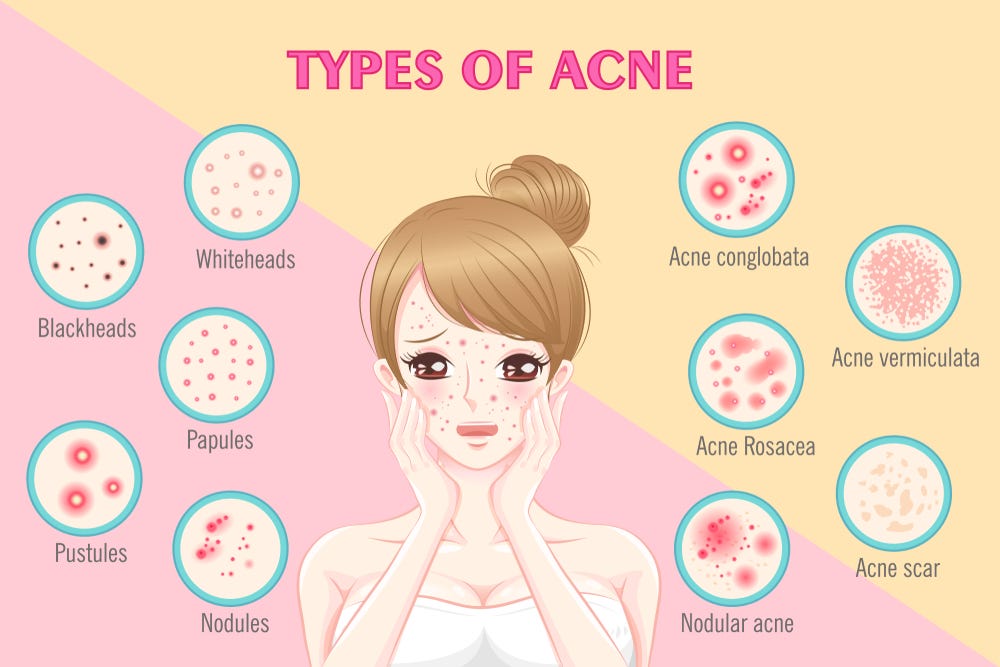Acne is a common skin condition that affects millions of people worldwide, characterized by the presence of pimples, blackheads, whiteheads, cysts, and nodules. The severity and type of acne can vary significantly from person to person, influencing the approach to treatment. Understanding the different types of acne and their respective treatments is crucial for effectively managing this condition.
1. Comedonal Acne: Comedones are non-inflammatory acne lesions that include blackheads and whiteheads. They occur when hair follicles become clogged with oil (sebum) and dead skin cells. Treatment typically involves topical retinoids, which help to unclog pores and prevent new comedones from forming. Salicylic acid is also effective in reducing comedones by exfoliating the skin.
2. Inflammatory Acne: Inflammatory acne includes papules, pustules, and nodules. Papules are small, red bumps, while pustules are red bumps with white centers filled with pus. Nodules are larger, painful, solid lumps beneath the surface of the skin. Treatment often involves topical antibiotics such as benzoyl peroxide or antibiotics like clindamycin to reduce inflammation and kill bacteria. Oral antibiotics like doxycycline or minocycline may be prescribed for moderate to severe cases.
3. Cystic Acne: Cystic acne is the most severe form of acne and is characterized by large, painful cysts and nodules deep within the skin. It is often resistant to topical treatments and may require oral medications such as isotretinoin (Accutane), a potent retinoid that reduces sebum production and prevents acne formation by targeting multiple aspects of acne development. Corticosteroid injections may also be used to quickly reduce inflammation and pain associated with cystic lesions.
4. Hormonal Acne: Hormonal acne typically affects women and is associated with hormonal fluctuations, such as those that occur during puberty, menstrual cycles, pregnancy, or menopause. This type of acne often manifests as deep, tender nodules around the chin, jawline, and lower cheeks. Treatment options include oral contraceptives (birth control pills) that regulate hormonal fluctuations and reduce sebum production. Spironolactone, an anti-androgen medication, may also be prescribed to block the effects of androgens on the skin.
5. Acne Rosacea: Acne rosacea is a chronic inflammatory skin condition that primarily affects the face, causing redness, visible blood vessels, papules, and pustules. Unlike acne vulgaris, it typically occurs in adults and is often triggered by factors such as sunlight, heat, alcohol, spicy foods, and stress. Treatment may include topical medications like metronidazole or azelaic acid to reduce inflammation and oral antibiotics for more severe cases. Laser and light therapies can also be effective in managing rosacea symptoms.
6. Acne Mechanica: Acne mechanica results from friction, pressure, or rubbing of the skin, often caused by wearing tight clothing, helmets, or backpacks. It typically appears as small, red bumps and can worsen with heat and sweat. Treatment involves avoiding friction and wearing loose, breathable clothing. Topical treatments with salicylic acid or benzoyl peroxide can help clear existing lesions.
Conclusion: Effective treatment of acne depends on accurately identifying the type and severity of acne present. While over-the-counter products can be beneficial for mild cases, moderate to severe acne often requires prescription medications and may benefit from a combination of topical treatments, oral medications, and in some cases, procedural interventions. Consulting with a dermatologist is essential for developing a personalized treatment plan that addresses individual skin concerns and achieves optimal results. With appropriate treatment, most people can effectively manage acne and minimize its impact on their skin and quality of life.





Comments